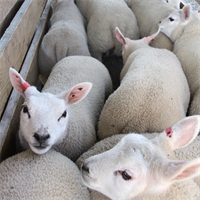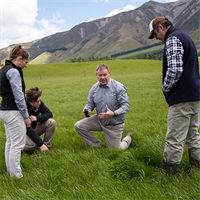07Apr
Agronomy Update April 2025
April Agronomy Update by Bill Cabout, Ruralco’s Ashburton Store Manager
Fodder Crops:
Fodder crops are looking good with all the regular rain we have been receiving.
Most sprays on fodder beet are now done. If you decide to put a late fungicide on, please be aware of required withholding periods.
Fodder brassicas may need insecticides for white butterfly, diamondback moth caterpillars, and leaf miner. Additionally, an aphicide should also be used to control aphids. Integrated Pest Management (IPM) approaches are recommended to target pests while preserving beneficial insects.
Autumn Sown Crops:
For post-harvest crops, use Diazinon to control grass grub. Chlorpyrifos Granules (Suscon Green) is currently sold out.
Slug control is crucial, especially in irrigated fields with a lot of trash. Paddocks need to be monitored, and slug bait applied as needed. It is cheaper to control slugs than to redrill a crop.
Pre-emergence sprays are necessary to control weeds. For wheat, use Firebird or Invado for hairgrass, and consider using Terbuthylazine for a broader range of weeds. Avadex Extra can help control wild oats pre-sowing. Sakura is a new herbicide for controlling various grasses and weeds. For wheat, pairing cultivars with appropriate sowing dates and managing plant populations are critical for achieving high yields.
For barley, Firebird or Invado can be used similarly.
For clover using Trifluralin pre-sowing does an excellent job in controlling certain weeds. After drilling Armanda/Preside gives good control of certain weeds without needing to be concerned about the clover size.
Most grass seed crops have been planted by now. Just be aware of slugs and grass grub and take the necessary steps to control these.
Grass Grub Control in Pasture
Grass grub is a significant pest in Canterbury pastures. Applying Diazinon liquid to short pasture in March and April, followed by sufficient rainfall (At least 12mm) to wash it in, is effective for controlling this pest. Ensuring timely application and adequate rainfall is crucial for the best results.
Gibberellic Acid
By applying Gibberellic Acid during the autumn period, grass growth on pasture can be increased by 30-60% within just three weeks. For this to be successful there must be sufficient fertility and moisture to support this extra growth, and it is often applied with liquid nitrogen to help with this. Both granular and liquid versions of Gibberellic Acid are available. It needs to be applied 3-5 days after grazing. We have liquid nitrogen available in 1000lt pods to go with the Gibberellic Acid.
With all the above scenarios talk to your Ruralco representative for the best options for you and your situation.
Related

Agrecovery will be completing a large drum collection for the whole of New Zealand starting on the 1...
Read More

“Water is the forgotten source of bacteria and pathogens on your farm.”
Read More

At a time when sheep numbers are at an all-time low and amid continued decline in industry confidenc...
Read More

The end of the road is where Colin Drummond and Erin Cassie share their undeterred passion for their...
Read More

What do Lowline Angus cattle, Suffolk sheep, Argentine barbecues and academia have in common? They r...
Read More

Cultivation and drilling of pasture and autumn sown crops are underway with the long-term forecast t...
Read More